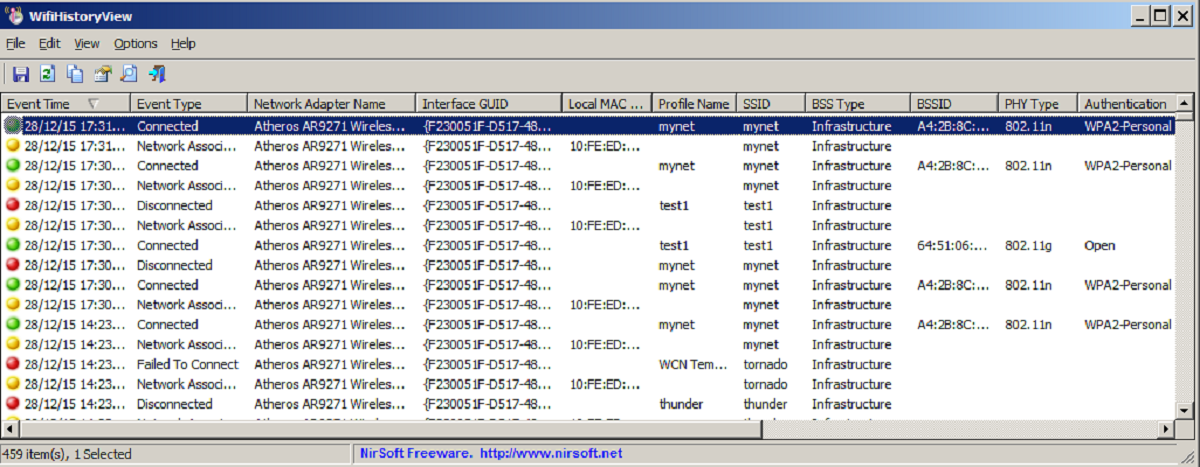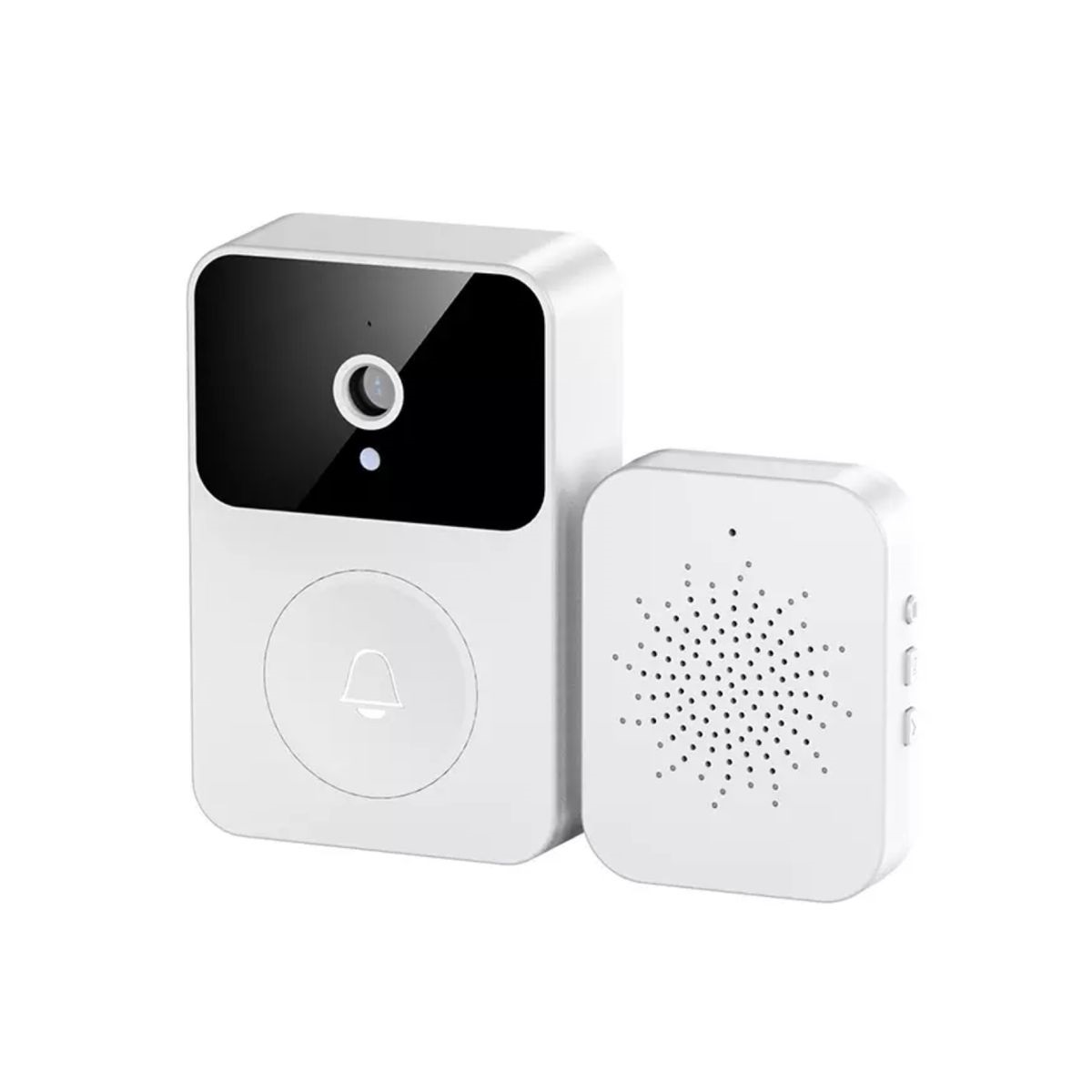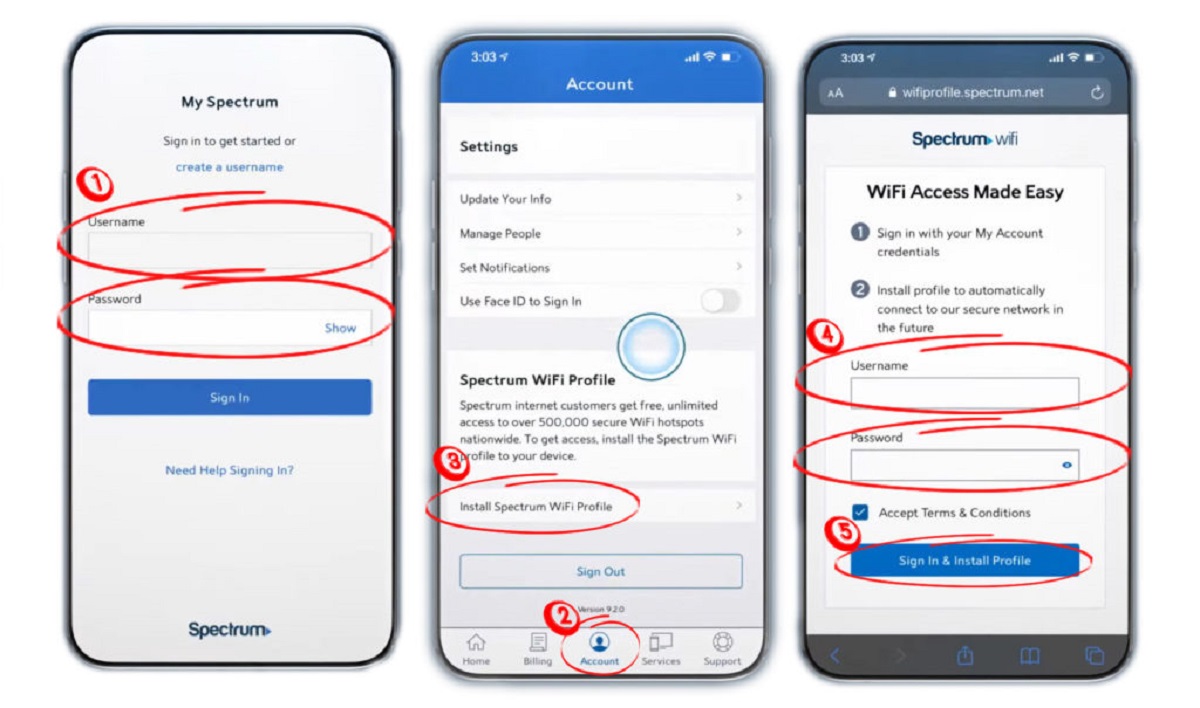Introduction
With the rapid advancement of technology, wifi has become an integral part of our everyday lives. It allows us to connect to the internet wirelessly, providing convenience and flexibility. However, this convenience comes with concerns about privacy and security. One question that often arises is whether it is possible to see what someone is doing on their phone through wifi.
To understand the answer to this question, it is important to have a basic understanding of how wifi works. Wifi, short for wireless fidelity, uses radio waves to transmit data between devices and a router. It operates on a specific frequency and requires both the transmitting device and the receiving device to be within range of the router.
While wifi allows us to access the internet and communicate with others, it is not designed to provide visibility into the specific activities of other devices on the network. This means that simply being connected to the same wifi network as someone else does not grant you the ability to see what they are doing on their phone.
Network security also plays a crucial role in protecting the privacy of users on a wifi network. Most modern routers come with built-in security features, such as password protection and encryption, to safeguard against unauthorized access. These security measures help prevent outsiders from infiltrating the network and monitoring the activities of connected devices.
Moreover, it is important to debunk the myth that someone can hack into your phone and see what you are doing through wifi. While security vulnerabilities do exist, hacking into a device requires advanced technical skills and knowledge. Most average users are not at risk of being hacked simply by being connected to a wifi network.
In the following sections, we will take a closer look at network security and explore the tools and techniques that hackers might use to exploit wifi networks. We will also discuss ways to protect your phone from potential wifi attacks. By understanding these concepts, you can take proactive steps to ensure your privacy and security while using wifi networks.
How Does Wifi Work?
Wifi is a technology that allows devices to connect and communicate wirelessly using radio waves. It operates within the 2.4 GHz and 5 GHz frequency bands and is based on the IEEE 802.11 standard. Understanding how wifi works can help demystify the process of transmitting data over a wireless network.
When you connect a device, such as a smartphone or laptop, to a wifi network, it establishes a connection with a wireless router. The router acts as a gateway, connecting the device to the internet and other devices on the network. It does this by receiving and transmitting data using radio waves.
The data sent over a wifi network is divided into small units called packets. Each packet contains information such as the source and destination addresses, as well as the actual data being transmitted. These packets are then transmitted between devices using radio signals.
To ensure that packets reach their intended destination, wifi networks use a technique called modulation. Modulation involves encoding the data onto a carrier signal, which is transmitted through the air. Devices on the network use the same modulation scheme to decode the signal and extract the data.
Wifi networks also use a technique called spread spectrum to minimize interference and improve reliability. Spread spectrum involves spreading the signal over a wider frequency range than the original data signal. This helps prevent interference from other devices operating on the same frequency and increases the overall stability of the connection.
To connect to a wifi network, a device needs to authenticate itself with the router. This is typically done by entering a password or using other authentication methods, such as WPA or WPA2 encryption. Once authenticated, the device is granted access to the network and can begin transmitting and receiving data.
Overall, wifi technology has revolutionized the way we connect to the internet and communicate with others. It offers the convenience of wireless connectivity, allowing us to stay connected on the go. Understanding the basics of how wifi works can help us make the most of this technology while ensuring the security and privacy of our data.
Can You See What Someone Is Doing on Their Phone Through Wifi?
One common concern people have when using wifi networks is whether it is possible for others to see what they are doing on their phones. The answer to this question is not straightforward and depends on various factors.
When connected to the same wifi network as someone else, it is important to note that merely being on the same network does not grant you access to their device’s activities. Wifi networks are designed to segregate and protect data transmission between devices. Each device connected to the network has its own unique IP address and is allocated a specific portion of the bandwidth to transmit and receive data.
In order to intercept and view the contents of another person’s activity on their phone, one would need to engage in illegal and unethical activities, such as hacking or using specialized spying tools. These actions are not only highly sophisticated and technically demanding but are also illegal and punishable by law.
Network security, including encryption and password protection, plays a crucial role in preventing unauthorized access. Most modern wifi routers come with robust security measures, such as WPA2 encryption, to ensure that data transmitted between devices is secure and cannot be intercepted.
Additionally, smartphone operating systems have built-in security features that protect the user’s data and activities. These include app sandboxing, data encryption, and user authentication mechanisms. Such security measures make it highly challenging for someone else to remotely access and monitor the activities on a smartphone through wifi.
It is important to note that while wifi networks provide a convenient way to connect to the internet, they are not foolproof. If a wifi network is not properly secured, it could potentially be vulnerable to hacking or eavesdropping. This is why it is essential for both network administrators and individual users to take steps to secure their networks.
To ensure the privacy and security of your activities on wifi networks, consider the following measures:
1. Use a strong, unique password for your wifi network to prevent unauthorized access.
2. Enable WPA2 encryption on your router to ensure that data transmitted over the network is encrypted and secure.
3. Regularly update your router’s firmware to fix any security vulnerabilities.
4. Avoid connecting to public wifi networks without using a VPN (Virtual Private Network) for added security.
5. Be cautious when downloading and installing apps, and only use trusted sources.
By following these best practices and maintaining a vigilant approach to network security, you can safeguard your privacy and protect your activities on wifi networks from unauthorized access.
Understanding Network Security
Network security plays a vital role in protecting the privacy and integrity of data transmitted over wifi networks. It encompasses various measures and protocols designed to prevent unauthorized access, protect against cyber threats, and ensure the confidentiality of information.
One of the key elements of network security is encryption. Encryption involves encoding data in such a way that it is unreadable to anyone except those who have the encryption key. This ensures that even if data is intercepted, it cannot be deciphered and remains secure. Wifi networks typically use encryption protocols such as WPA2 (Wi-Fi Protected Access II) to encrypt the data transmitted between devices.
Another important aspect of network security is access control. This involves implementing measures to ensure that only authorized devices and users can access the network. Password protection is one common form of access control, where users are required to enter a unique password to connect to the wifi network. It is important to choose a strong, complex password to prevent unauthorized access.
Firewalls also play a critical role in network security. A firewall acts as a barrier between a private internal network and external networks, filtering incoming and outgoing network traffic based on predefined security rules. It helps identify and block potential threats, such as malware or unauthorized access attempts, enhancing the overall security of the network.
Regular security audits and updates are essential to maintain network security. This includes regularly updating the firmware of the router to patch any security vulnerabilities and keeping the operating systems of connected devices up to date. Security audits involve checking the network for any weaknesses or vulnerabilities that could be exploited by attackers and taking appropriate measures to address them.
In addition to these technical measures, user awareness and education are also crucial in maintaining network security. Educating users about the risks associated with connecting to unsecured networks, practicing safe internet browsing habits, and being cautious of potential phishing attacks can help prevent security breaches.
It is important to note that while network security measures provide a strong layer of protection, they are not foolproof. Hackers and cybercriminals are constantly evolving their techniques, and it is essential to stay updated on the latest security practices and threats.
By implementing robust network security measures, staying vigilant, and actively participating in securing your wifi network, you can ensure the privacy and security of your data and activities while connected to wifi networks.
Can Someone Hack Your Phone through Wifi?
Wifi networks have become an integral part of our lives, providing us with the convenience of wireless connectivity. However, there is a concern among users about the possibility of someone hacking into their phones through wifi. While it is not impossible to hack a phone connected to a wifi network, it is important to understand that it requires advanced technical knowledge and skills.
For an average user, the chances of their phone being hacked through wifi are relatively low. This is because modern smartphone operating systems have built-in security features that protect against unauthorized access. These security features include app sandboxing, strong encryption, and user authentication mechanisms, making it difficult for hackers to gain access to the device.
However, it is essential to note that there are security vulnerabilities that can be exploited by skilled hackers. These vulnerabilities can exist within the operating systems, applications, or even the wifi network itself. It is crucial for both users and manufacturers to stay updated with the latest security patches and updates to protect against potential threats.
There are various techniques that hackers may employ to compromise a device connected to a wifi network. These include:
1. Man-in-the-Middle (MitM) Attacks: In this type of attack, the hacker intercepts communication between the user’s device and the wifi network, allowing them to view and manipulate the data being transmitted. This can be done by exploiting vulnerabilities in the wifi network or using specialized tools.
2. Eavesdropping: Hackers can eavesdrop on wifi signals to capture sensitive information such as login credentials or personal data. This can be done using tools that capture and analyze wifi packets.
3. Malware Attacks: Malicious software, such as spyware or malware-infected apps, can be used to gain unauthorized access to a device connected to a wifi network. Once installed, these malware can collect sensitive data or grant remote control to the hacker.
To mitigate the risk of hacking through wifi, it is important to take proactive measures to protect your device:
1. Keep your device’s operating system and applications up to date to ensure you have the latest security patches.
2. Use strong, unique passwords and enable two-factor authentication for all your online accounts.
3. Avoid connecting to unsecured wifi networks, such as public wifi without a VPN.
4. Install reliable antivirus and security software on your devices to detect and prevent malware attacks.
5. Be cautious when downloading apps or clicking on suspicious links, as they may contain malware or lead to phishing attempts.
In summary, while it is technically possible for someone to hack your phone through wifi, the average user is unlikely to be a target of such attacks. By maintaining good security practices and staying informed about potential threats, you can significantly minimize the risk and protect your phone from wifi hacking attempts.
Tools and Techniques Used for Wifi Hacking
Wifi hacking refers to the unauthorized access and manipulation of wifi networks, often for malicious purposes. Hackers use various tools and techniques to exploit vulnerabilities and gain control over wifi networks. Understanding these tools and techniques can help individuals better protect themselves against potential wifi attacks.
1. Packet Sniffers: Packet sniffers are tools that capture and analyze network traffic. They can be used to intercept wifi packets and extract sensitive information, such as login credentials or personal data. Popular packet sniffing tools include Wireshark and tcpdump.
2. Wifi Password Cracking Tools: These tools are used to crack the passwords of wifi networks. They exploit vulnerabilities or use brute force attacks to guess the correct password. Examples of wifi password cracking tools include Aircrack-ng and Hashcat.
3. Rogue Access Points: A rogue access point is a wifi network set up by an attacker to deceive users into connecting to it. These networks mimic legitimate networks and can capture all network traffic, including sensitive information. Attackers can use tools like Airbase-ng to create rogue access points.
4. Denial of Service (DoS) Attacks: DoS attacks overwhelm a wifi network with a flood of requests, causing it to become unavailable to legitimate users. Attackers can use tools such as Aireplay-ng to generate a high volume of network traffic, leading to service interruption.
5. Evil Twin Attacks: An evil twin attack involves creating a fake wifi network that appears to be a legitimate network. Users unknowingly connect to the fake network, allowing the attacker to intercept their data. Tools like Karma and Fluxion can be used to execute evil twin attacks.
6. Password Cracking Tools: Password cracking tools attempt to guess or crack passwords used on wifi networks. These tools utilize various techniques, including brute force attacks, dictionary attacks, and rainbow table attacks, to crack passwords. Popular password cracking tools include John the Ripper and Hydra.
It is important to note that these hacking tools and techniques are primarily used by malicious individuals with the intention of unauthorized access and data theft. Using them without appropriate authorization is illegal and can lead to severe legal consequences.
By understanding the tools and techniques used in wifi hacking, users can take proactive steps to protect themselves. This includes regularly updating wifi routers and devices, using strong passwords with encryption protocols, and being cautious when connecting to unknown or unsecured wifi networks.
In addition, network administrators must implement security measures such as strong access controls, network monitoring, and intrusion detection systems to mitigate the risk of wifi hacking. Regular security audits and updates are crucial to identify and address any vulnerabilities in the network infrastructure.
By staying informed about the tools and techniques used by hackers, individuals and organizations can heighten their security awareness and take appropriate measures to safeguard their wifi networks and sensitive data.
How to Protect Your Phone from Wifi Attacks
In an era where wifi networks are ubiquitous, it is essential to take proactive measures to protect your phone from potential wifi attacks. By implementing proper security practices, you can significantly reduce the risk of falling victim to malicious activities. Here are some crucial steps to protect your phone from wifi attacks:
1. Connect to Secure Networks: Always connect to secure and trusted wifi networks. Avoid connecting to public or unsecured networks that do not require a password. If you must use a public network, consider using a virtual private network (VPN) to encrypt your data and protect your online activities.
2. Regularly Update Your Phone’s Software: Keep your phone’s operating system and applications up to date. Updates often include security patches that address vulnerabilities and protect against potential threats. Enable automatic updates on your device to ensure you always have the latest security features.
3. Enable Network Encryption: When connecting to a wifi network, ensure that it is using encryption protocols such as WPA2. This encrypts the data transmitted between your device and the network, making it more difficult for hackers to intercept and decipher your data.
4. Use Strong Passwords: Set a strong, unique password for your wifi network. Avoid using easily guessable or common passwords. A strong password should include a combination of uppercase and lowercase letters, numbers, and special characters. Consider using a password manager to securely store and generate strong passwords.
5. Disable Automatic Network Connections: Turn off the automatic connection feature on your phone, which connects to available networks without your consent. By manually selecting networks and evaluating their security, you have greater control over the networks your phone connects to.
6. Be Wary of Unsecured Apps and Websites: Avoid downloading apps and visiting websites from untrusted sources. Stick to reputable app stores and only install apps with positive reviews and a high number of downloads. Look for the padlock symbol and “https” in the website URL to ensure secure connections.
7. Use a Reliable Mobile Security App: Install a reputable mobile security app that offers features such as antivirus scanning, malware detection, and device tracking. These apps can help detect and mitigate potential threats to your phone’s security.
8. Be Cautious of Phishing Attacks: Be vigilant about phishing attacks, which may come through email, text messages, or even fake wifi networks. Avoid clicking on suspicious links or providing personal information to untrusted sources. Verify the authenticity of requests or messages before taking any action.
9. Regularly Back Up Your Data: Regularly back up your phone’s data and settings to an external storage device or a cloud service. In case of a security breach, you can easily restore your data and minimize any potential loss or damage.
By following these best practices, staying informed about emerging threats, and being cautious with your online activities, you can significantly enhance the security of your phone when connected to wifi networks. Remember, proactive measures and user vigilance are key to safeguarding your phone from potential wifi attacks.
Conclusion
Wifi networks have revolutionized the way we connect to the internet and communicate with others. While they provide convenience and flexibility, it is crucial to understand the potential risks and take proactive measures to protect ourselves from potential threats.
Through an understanding of how wifi works, it becomes clear that simply being connected to the same wifi network as someone else does not grant us the ability to see their activities on their phone. Network security measures, including encryption, authentication, and password protection, play a crucial role in safeguarding the privacy and security of users on wifi networks.
While it is technically possible for someone to hack into a phone connected to a wifi network, the average user is unlikely to be a target of such attacks. Modern smartphone operating systems have built-in security features that protect against unauthorized access, and wifi hacking requires advanced technical knowledge and skills.
To enhance the security of our phones on wifi networks, we must connect to secure networks, regularly update software, enable network encryption, use strong passwords, and be cautious of unsecured apps and websites. Additionally, being aware of phishing attacks and regularly backing up our data can further safeguard our phones.
It is essential for both network administrators and individual users to stay informed about the tools and techniques used in wifi hacking to actively protect against potential threats. By following best practices, implementing robust security measures, and remaining vigilant, we can ensure the privacy and security of our phones while connected to wifi networks.
Remember, while wifi networks provide convenience and connectivity, it is our responsibility to take proactive steps to mitigate risks and protect our devices and data. By being informed, proactive, and security-conscious, we can safely enjoy all the benefits that wifi networks have to offer.

























